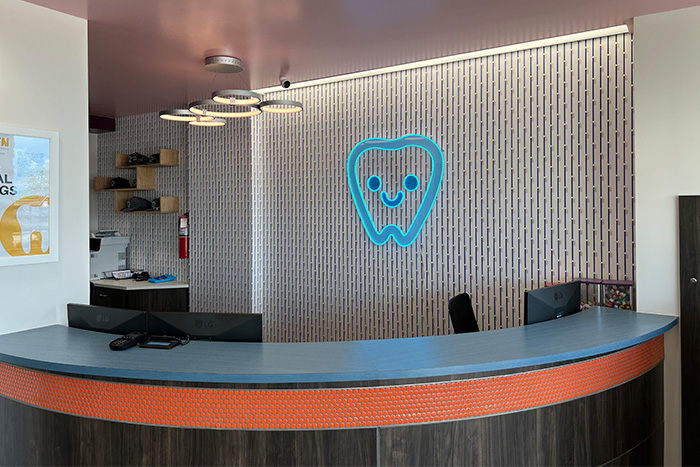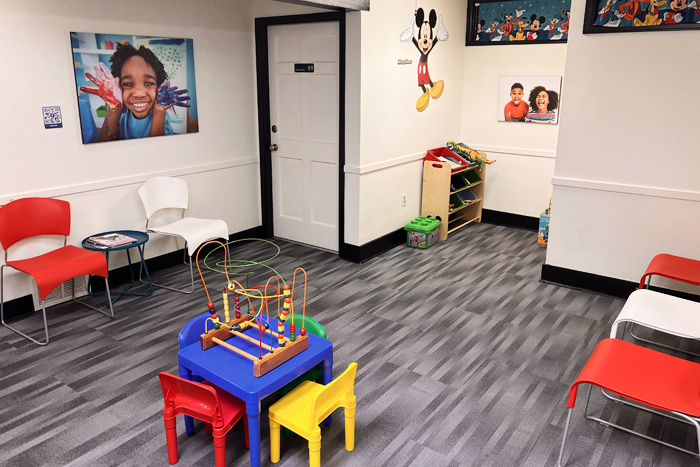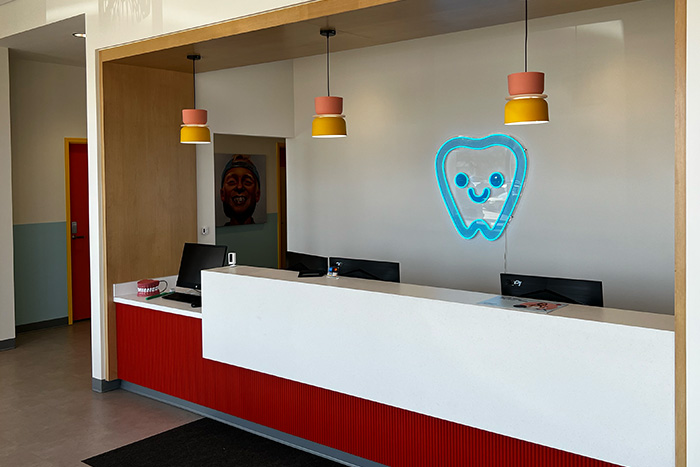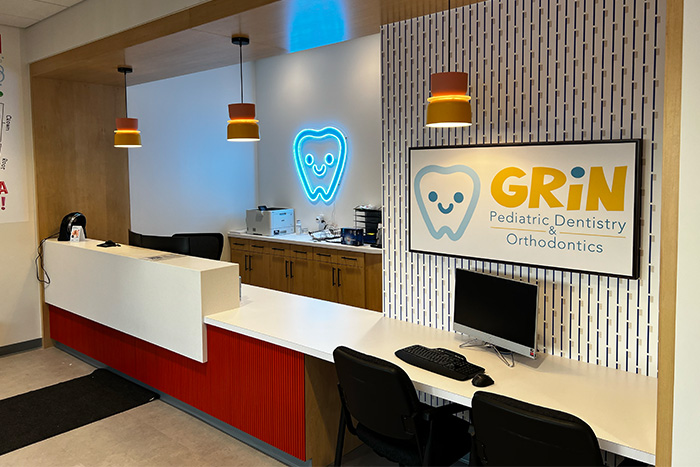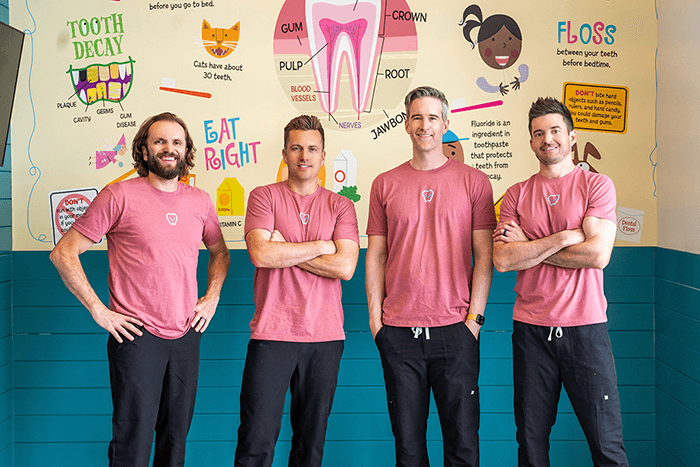Should My Child Brush Their Tongue Too?
Ensuring proper oral hygiene is essential for a child’s overall health and well-being. While brushing teeth and flossing are widely emphasized, an often-overlooked aspect of kids’ oral hygiene is tongue cleaning. The tongue harbors bacteria, food particles, and dead cells, which, if not removed, may contribute to bad breath and other oral health concerns.
This article explores the importance of tongue brushing for kids, its benefits, the appropriate techniques, and whether a tongue scraper for kids is a suitable option.
The Importance of Tongue Brushing for Kids
1. Reducing Bacteria and Plaque Accumulation
Bacteria are not only present on the teeth and gums but also accumulate on the tongue. If left uncleaned, the tongue can become a breeding ground for harmful microorganisms that contribute to plaque formation and oral infections.
2. Preventing Halitosis (Bad Breath)
One of the leading causes of persistent bad breath in children is bacterial buildup on the tongue. Regular tongue brushing kids teeth helps remove these bacteria and food debris, significantly reducing halitosis.
3. Supporting Overall Oral Health
Oral health for kids extends beyond tooth and gum care. A clean tongue reduces the likelihood of cavities, gum disease, and other oral health complications.
4. Enhancing Taste Sensation
A coated tongue can diminish a child’s ability to taste food properly. Regular cleaning ensures that taste buds function optimally, enhancing their overall eating experience.
At What Age Should Children Begin Tongue Brushing?
Children can begin tongue cleaning as early as two years old. Initially, using a damp washcloth or a soft toothbrush is recommended for younger children. As they develop better motor skills, typically around the age of six or seven, they can transition to a tongue scraper for kids under parental supervision.
Proper Tongue Cleaning Techniques for Children
1. Selecting the Appropriate Cleaning Tool
- Soft-bristled toothbrush – A regular toothbrush can be used for tongue cleaning.
- Tongue scraper for kids – Specially designed scrapers gently remove bacteria and buildup.
- Silicone tongue brushes – These are soft and easy for young children to handle.
2. Step-by-Step Tongue Brushing Process
Encourage the child to extend their tongue outward.
Using a soft-bristled toothbrush or tongue scraper, gently clean from the back of the tongue to the front.
Apply light pressure to avoid discomfort.
If using a scraper, rinse it between strokes to remove buildup.
Rinse the mouth thoroughly after cleaning.
3. Incorporating Tongue Cleaning into a Daily Routine
Encourage children to brush their tongue twice daily along with their healthy teeth.
Use a mirror to help them see and understand the process.
Make the experience engaging by setting a timer or playing a song while brushing.
Comparing a Tongue Scraper and a Toothbrush for Tongue Cleaning
| Feature | Toothbrush | Tongue Scraper |
|---|---|---|
| Ease of Use | Convenient, part of regular brushing routine | Effective but may need parental guidance for younger kids |
| Effectiveness | Removes surface debris; less effective at deep cleaning | Removes more bacteria and buildup from the tongue’s surface |
| Safety | Very safe; minimal risk of injury | Safe when used gently; may cause discomfort if misused |
| Recommended Age | Suitable for all ages, including toddlers | Ideal for children aged 6 and above |
Both tools can aid in proper tongue hygiene. For older children who can manage more precision, a tongue scraper may offer more effective results. However, toothbrushes are easier for younger kids to use as part of their normal brushing routine.
Both tools are effective, but a tongue scraper for kids may provide a more thorough cleaning experience for older children.
Common Concerns About Tongue Brushing in Children
1. My Child Has a Strong Gag Reflex. How Can I Help?
Encourage starting from the middle of the tongue rather than the back.
Use a smaller toothbrush or tongue scraper designed for children.
Advise the child to breathe through their nose to reduce the gag reflex.
2. Can Tongue Brushing Be Harmful?
When performed correctly, tongue brushing is safe and beneficial. Children should be instructed to use gentle pressure to avoid irritation or discomfort.
3. Is a Tongue Scraper Necessary for Children?
While a toothbrush is sufficient for tongue cleaning, a tongue scraper for kids may provide a more thorough removal of bacteria and debris. Parents should choose a child-friendly scraper made of soft, flexible material.
Consequences of Neglecting Tongue Cleaning
Failing to clean the tongue regularly can lead to several oral health concerns, including:
- Persistent bad breath due to bacterial accumulation.
- Increased risk of cavities and gum disease caused by lingering bacteria.
- A coated tongue, which may impair the child’s sense of taste.
- Heightened susceptibility to oral infections resulting from excessive bacterial growth.
Conclusion: Should Your Child Brush Their Tongue?
Yes, tongue brushing should be an essential component of a child’s oral hygiene routine. By incorporating tongue brushing for kids, parents can help prevent bad breath, reduce the risk of dental problems, and promote optimal oral health for kids.
Whether using a toothbrush or a tongue scraper for kids, establishing a comprehensive kids’ oral hygiene routine that includes tongue cleaning will contribute to a healthier, fresher smile.
Is Silver Diamine Fluoride Application Right for Your Child?
Is SDF Right For Your Child?
Silver Diamine Fluoride application is a common tooth decay treatment and prevention option in babies, toddlers, and children. As a parent, you are likely wondering if silver diamine fluoride (SDF) application is really right for your child.
Who makes a good SDF candidate?
SDF is oftentimes the ideal in the following situations:
- Babies and toddlers: This is the least-invasive option to treat baby tooth decay. It can also keep teeth from decaying further. Some parents wonder if it’s necessary to treat baby tooth decay since the teeth will fall out—it is necessary. Children need strong, healthy teeth to chew their food and to speak.
- Multiple cavities: SDF application can cover up to eight teeth at once. Filling multiple cavities takes longer and is less comfortable for children, making this the preferred option for kids with multiple cavities.
- Special needs: Children of all ages with special needs may not have the ability to restrict their own movement enough to receive numbing. They also may not understand the process enough to remain calm. SDF can treat their cavities in just minutes, without causing undue distress.
- Older kids: Kids up to age 13 can deal with tooth decay in baby teeth while their permanent teeth come in. With a skilled application, SDF can keep decaying baby teeth from negatively impacting surrounding permanent teeth as they emerge and develop.
- Genetic predisposition: If you have a family history of easily getting cavities, SDF can lower your children’s risk of getting cavities.
Limitations:
SDF is not recommended if your child has:
- A silver allergy
- Significant damage to their front teeth
- Been diagnosed with gingivitis or lichen planus
- Or if they don’t want to have stained teeth at all
Silver diamine fluoride application is internationally recognized for its safety and effectiveness in treating and preventing cavities. SDF is a commonly used tooth decay treatment option in infants all the way through the loss of the last baby tooth. Additionally, it has a lower cost and requires less time at the dentist than traditional fillings. If you have any questions or would like a consultation, contact our office.
Learn More About Silver Diamine Fluoride
Frenectomies: Procedures, Benefits, and More
All Things Frenectomy at Grin Pediatric Dentistry and Orthodontics
Frenectomy Procedures
A frenectomy is a simple surgical procedure that involves the removal of one or both of the frenum from the mouth. The frenum is a connective tissue membrane that attaches one surface within the mouth to another. Frenum means bridle in Latin, and this term is used because it restricts tongue movements when it is connected by a frenulum between two surfaces inside of the mouth or pharynx. The two types of frenum are known as the labial frenum and the lingual frenum. In some cases, a frenectomy can help with breastfeeding and relieving respiratory issues.
- Labial Frenectomy: A labial frenectomy is a procedure that removes the small tissue connecting the upper lip to the gum between your two front teeth. It can also cause gum recession by lifting the gums off of the jawbone.
- Lingual Frenectomy: The lingual frenum is a small fold of tissue in the middle of the underside of the tongue. It can be positioned too far forward, which can cause it to over-tighten and restrict your tongue’s movement when it comes to speaking, singing, and eating. Lingual frenum, also known as being “tongue-tied,” can also impede an infant’s ability to latch during breastfeeding or eat from a bottle.
Benefits
There are several benefits to having a frenectomy. Those include:
- Improves appetite and eating in infants and children
- Improves speech function
- Improves bite function
- Helps to reduce pain and discomfort
- Promotes self-confidence in children and teens by eliminating gaps in the smile
What Happens After a Frenectomy
In most cases, the pain from a frenectomy is mild, and it heals quickly. The patient can have normal function of the lips and tongue. Many patients hardly notice the effects of the surgery.
For more information about frenectomies and if one is right for your child, contact one of our Colorado locations. We’re always happy to explain more and help you decide if it’s right for your child.
How To Stop Your Child From A Thumb-Sucking Habit
How To Stop Your Child From A Thumb-Sucking Habit
Young children and babies learn to suck their thumb as a natural reflex. It becomes innate behavior because they had to suckle their milk to get nutrition when they were young. It is a self-soothing behavior and can stay with them as they grow. At first, this habit may seem harmless, but it can eventually lead to a changing mouth shape, which creates an overbite. If your child doesn’t break this habit before their permanent teeth come in, there is a chance that their palate may need correcting along with braces to straighten their teeth.
Ways to Help Your Child Stop The Habit:
- Use positive reinforcement. Always praise and reward your child when they don’t suck their thumb – this can be done through reward charts or gentle reminders.
- Keep the hands busy and provide distraction. You won’t be able to keep your child distracted at all times, but this can work in conjunction with other methods. These methods can include: Using fidget toys, arts and crafts, dancing, writing, jewelry making, sports, baking, baking, etc.
- Thumb guards. Thumb guards can be a great solution for your child because it allows them to still engage in daily activities without much difficulty. The sides of the thumbguard have air holes so your child cannot create suction when trying to suck it. Your pediatric dentist may have suggestions as to what brand to use.
Always remember to praise your child and not ridicule or make them feel bad for this behavior – the damage of doing this can be lifelong and could do nothing to help them. In order for your child to break their thumb-sucking habit, you’ll need to keep it positive and upbeat to encourage them.
At Grin Pediatric Dentistry we work with you and your child to break their thumb-sucking habits. We know that once it becomes a habit, it is very hard to break. With the use of positive reinforcement, healthy distractions, and thumb guards, we can help stop your child from sucking their thumb.
How to Encourage Your Child To Develop Healthy Dental Habits
Teaching how to develop good dental habits in children is essential in ensuring children are set for a lifetime of healthy smiles. At Grin Pediatric Dentistry and Orthodontics, we have the resources and tips to make your little ones excited about taking care of their teeth!
When Should Dental Hygiene Practices Start?
Taking care of your baby’s teeth should begin on day one. After your baby has finished eating, it is important to wipe their gums off with a washcloth and warm water.
As your baby grows and begins teething and eating solids, begin using a silicone finger brush and warm water after each meal. Once your baby’s first tooth has erupted, you can begin placing a small amount of fluoride toothpaste (no larger than a grain of rice) on their toothbrush and brush twice a day.
Schedule your baby’s first pediatric dental appointment between when their first tooth appears, between 6 and 8 months, and their first birthday. The dentist will perform a thorough exam to make sure your child’s teeth, gums, and mouth are healthy. This will also help your child become familiar with the sights and sounds of the dentist.
How To Make Dental Care Exciting:
Let Them Pick Out A Special Toothbrush and Other Products:
Many department and retail stores carry unique, colored and character toothbrushes. Bringing your child to the store and letting them pick out their own toothbrush will make them want to brush their teeth more often as they’ll be excited to use their very own special toothbrush. Just be sure to buy a soft-bristled toothbrush. Let them choose their own toothpaste while they’re at it! They can choose from exciting flavors like strawberry and bubblegum!
Play Dental Games:
Download kid-friendly oral health apps from the App-Store that have educational games to teach about flossing and brushing. These games will make kids excited to practice the skills they learned on their own teeth. You can also encourage them to play pretend and be a dentist for their stuffed animals by practicing brushing and flossing the toy’s teeth. You can also turn brushing into a game with plaque disclosing tablets- have your age appropriate child chew one of these tablets to color all the plaque on their teeth, then see how much of the plaque they can remove by brushing!
Play Music or Use a Fun Timer:
Play your child’s favorite song or some upbeat music while they brush their teeth. Doing so will encourage them to brush for the full 2 minutes. There are also kid-friendly timers you can download in the App-Store that allow kids to pick out a certain theme or character that pops up when the timer goes off!
With these tips, you’re sure to get your child excited about taking care of their mouth. Solidifying these habits with your kids now is key in making sure they’re set for a lifetime of healthy smiles! To learn more about caring for your child’s teeth, visit the American Academy of Pediatric Dentistry for more resources. Contact our office to set up a dental appointment for your little one today!
How to Fix an Underbite
How to Fix an Underbite at Grin Pediatric Dentistry and Orthodontics
In this blog, we’ll be discussing the common question: how to fix an underbite? An underbite is a misalignment of the jaw that causes the lower teeth to protrude beyond the upper teeth. This is also known as a Class III malocclusion or “reverse bite.” About 5-10% of the population is affected by underbites. Underbites can range from mild cases that are hardly noticeable, to severe cases where the lower jaw extends out far beyond the upper jaw.
Having an underbite can dramatically affect a person’s self-confidence about their smile. Our office provides underbite correction services to help you achieve a smile you are confident in. Treating an underbite depends on your age and the severity of your underbite. The most common methods to correct an underbite include:
- Upper Jaw Expander: This option is usually recommended if the upper jaw is small in width. The expander works by being fitted across the patient’s palate and gradually widens the jaw so that the lower teeth match better with the lower teeth.
- Reverse-Pull Headgear: This type of headgear is used to pull the upper jaw forward. This option works most effectively for patients under the age of 10.
- Braces or Clear Aligners: This option is suitable for any patient – children or adults. Braces or clear aligners can be an effective treatment for underbites, especially if orthodontic elastics are worn.
- Tooth Extraction: Sometimes, tooth extraction may be necessary to correct an underbite. This option involves carefully selected teeth to help spacing issues in mild to moderate cases.
- Surgery: Orthognathic jaw surgery can be required to align the upper and lower jaws into their ideal positions. The surgery is low-risk and very predictable. In some cases, a referral to a maxillofacial surgeon will be provided by your specialist orthodontist.
The key to correcting an underbite is early diagnosis. However, it can still be treated as an adult. If you are curious about underbite correction, please call one of our offices using the buttons below.
Dental Anxiety in Children
Fear of the Dentist
It’s common for children—and adults—to feel afraid, stressed, or anxious when it comes to visiting their dentist. While many kids don’t enjoy going to the dentist, they don’t necessarily feel fear or anxiety but some children experience very real fear and anxiety. If parents and dentists don’t work together early on to reduce/eliminate these fears, it can develop into an actual phobia. At Wilderness Station Pediatric Dentistry, our office is designed to help children feel safe, relaxed, and comfortable at each of their visits. We work at every visit to minimize fears and create positive dental experiences for children.
Why Do Children Fear the Dentist?
It’s normal to feel a little anxiety when a visit to the dentist is coming up, especially for children. But, to help your child with their dental anxiety, you should understand the reasons they’re feeling anxious.
- Pain. Whether your child has heard about a painful experience that a parent or sibling had or if they’ve had a painful experience themselves, it’s understandable that they’re afraid. Children also often are afraid of needles associated with some dental work.
- Embarrassment. If a child has obvious oral health issues, such as decay, they can feel self-conscious and embarrassed.
- Lack of control. Fear of losing control is related to the fear of pain. A child knows that the big person with the pointy instruments is in charge. If there’s pain or discomfort, the child may very likely feel that he or she has no control over it.
Helping Your Child Overcome Dental Anxiety
As a parent, you can help your child manage and overcome their fears. We’ve included some of our dental anxiety management tips so you can help your children have a positive experience at every dental visit.
- Take them to the dentist early on. It’s recommended children visit a dentist when their first tooth appears or by their first birthday.
- Visit a pediatric dentist. Pediatric dentists are uniquely trained in caring for children’s oral health, including helping them feel safe and comfortable during visits.
- Let them bring something that comforts them such as a toy or blanket. This helps your child feel more comfortable during their entire visit.
- Speak positively about dental visits. The way you speak about the dentist can directly impact how your child sees the dentist; so it’s important that you don’t speak poorly about dental visits.
- Focus on practicing good oral health habits at home. When children are familiar with brushing, flossing, and the importance of oral health, it helps them have fewer oral health issues and more-positive experiences at the dentist.
- Give positve reniforcment. Before, during, and after dental visits, give your child praise for being able to take the steps required to have a healthy smile.
If you have any questions about pediatric dental anxiety or are ready to schedule your child’s dental visit—contact the Grin Pediatric Dentistry and Orthodontics team in Colorado.
Teeth Growing Behind Baby Teeth
Teeth Growing Behind Baby Teeth: What Does It Mean?
If your child has ever run up to you with two rows of teeth—you’re not alone! When permanent teeth come in before baby teeth have fallen out, we call them “Shark Teeth”. Teeth growing behind baby teeth, more commonly known as shark teeth, are common among children and if you’re a concerned parent, rest assured that it’s easily treatable.
What Causes Shark Teeth?
When a child has two rows of teeth it’s because their baby teeth didn’t fall out before the permanent teeth started to come in. Typically when permanent teeth erupt, even if baby teeth are still present, it adds pressure to the roots of the baby teeth. The added pressure should break the roots that connect the baby teeth to the gumline, ultimately causing the baby teeth to fall out as they should. But, when that doesn’t happen the permanent teeth will start to grow behind the baby teeth, causing a child to have two rows of teeth.
What Should You Do If Your Child Has Two Rows of Teeth?
If your child has multiple rows of teeth you have a couple of options:
- If the tooth is loose, encourage your child to try and wiggle it out.
- In the case where the tooth isn’t loose, schedule an appointment with your pediatric dentist.
A pediatric dentist will remove the baby’s tooth/teeth so your child’s permanent teeth can grow.
Permanent Tooth Eruption
Permanent tooth eruption occurs over a seven-year span, during which a child’s baby teeth fall out and are replaced by adult teeth. Permanent teeth usually start erupting around age 6 and typically appear in the same order that a child’s baby teeth came in. Children will have 20 baby teeth and eventually have 32 permanent teeth.
Just like teething in babies, permanent tooth eruption is different for each child. Regular dental visits not only help ensure your child’s optimal oral health but also gives you the chance to ask questions along the way if you’re concerned about their baby or permanent teeth. If you have questions about baby or permanent teeth, contact us today!
Are Baby Teeth Important?
The Importance of Baby Teeth
Tiny, but important ― that’s how baby teeth are referred to, especially by dentists. While most parents would look at their babies’ tiny teeth and wonder what in the world they could be thinking about, dentists realize early on that these tiny teeth aren’t just for looking at cute smiles and giggles.
Functions of Baby Teeth
Taking good care of your child’s teeth early on is crucial to their oral health now and for the rest of their lives. We’ve come up with several reasons why you want to keep your baby’s teeth in tip-top shape.
- These teeth are crucial to your child’s health and development. They help with the development of permanent teeth by saving space for them in the jaw. When a baby tooth is lost too early, the permanent teeth can drift to the empty space and make it difficult for other adult teeth to find room when they come in.
- Baby teeth aid in speech development. Taking care of your child’s teeth will help them speak and communicate better.
- They help your child maintain good nutrition by permitting him/her to chew properly.
- Baby teeth help children feel good about themselves and their smiles. It’s so important for children to feel confident from a young age and keeping their teeth healthy is imperative.
Baby teeth can get cavities, just like adult teeth. In addition to the pain caused by cavities, they can also lead to dental infections. Tooth decay is a serious, infectious, and transmissible disease that can spread quickly and lead to infection. If a tooth needs to then get extracted, this can cause the teeth to drift, which may lead to overcrowding and difficulty for the adult teeth to grow in.
Be sure to visit a dentist within six months of your child’s first tooth appearing and definitely by the time they reach the one-year mark. Our team will check for cavities and any other pediatric dental problems. We’ll also help show you and your child how to properly take care of their teeth. Give us a call today using the buttons below.
How to Brush Baby Teeth
Learn About Brushing Your Child or Toddlers Teeth in Lakewood, CO.
Helping your children create positive oral health habits will help them have a lifetime of healthy teeth. But if you’re wondering when do I start brushing my child’s teeth and how do I do brush them effectively—you’re not alone. At Grin Pediatric Dentistry and Orthodontics, we understand that brushing your child’s teeth can be challenging so we’ve created these tips on brushing baby teeth.
When Should I Start Brushing My Child’s Teeth?
- No baby teeth: Clean your baby’s mouth and gums with a soft, damp cloth. You can also help minimize the bacteria and sugar your child consumes by never dipping pacifiers in anything sweet and by not cleaning the pacifier with your own mouth.
- First baby tooth erupts: Begin using a small-headed, soft-bristled toothbrush to brush your child’s teeth.
- Baby teeth ages under 3: Apply a small amount of toothpaste (about the size of a grain of rice) and gently brush in a circular motion on the teeth and gums, for two minutes.
- Baby teeth ages 3+: Apply a pea-sized amount of fluoride toothpaste before brushing in tiny circles for two minutes. After brushing, have your child spit out any excess toothpaste.
We recommend that you brush twice a day (morning and before bedtime), start flossing as soon as your child has two teeth that are touching, and change to a new toothbrush every 3-4 months.
Make Brushing Fun
Help create positive brushing experiences by making the overall experience more fun for your child.
- Let them pick out a soft-bristled, child-sized toothbrush that they love.
- Bring a favorite toy in while brushing and let your child practice brushing the toy’s teeth (with just the toothbrush, no toothpaste).
- Take turns brushing your child’s teeth. If you start brushing, after one minute, let them try brushing either with your help or on their own. This will help them feel more involved and confident about brushing on their own when they get to that stage.
- Play a fun song that lasts about two minutes. This helps them understand how long they will have to brush and that once the song is over, it’s time to rinse.
- Give praise after brushing. Help encourage your child and create positive experiences by praising your child after each brushing.
Summary
Grin Pediatric Dentistry and Orthodontics is committed to keeping even the smallest smiles in Lakewood, CO as healthy as they can be. Our pediatric dentists can help educate parents and children so everyone feels confident knowing when to start brushing baby teeth, how to brush effectively, and how to make brushing teeth a fun activity. Schedule your child’s next check-up or call our office with any questions.
Call Grin Pediatric Dentistry and Orthodontics
